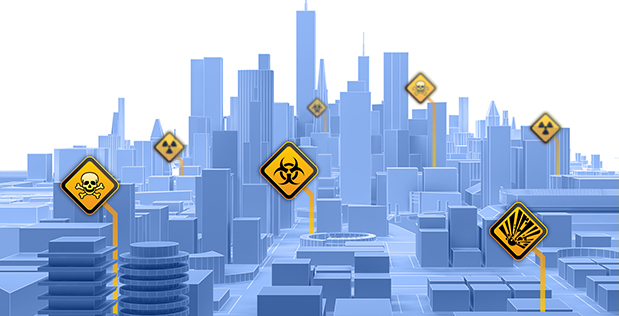
The Defense Advanced Research Projects Agency (DARPA) is testing new chemical sensors that are pushing the ability to detect chemical, biological, radiological, nuclear and explosive threats to potentially region-scale efforts.
The effort is coming of age under the SIGMA+ initiative, which is a spin-off of the SIGMA program. That program had demonstrated the ability to detect radiological and nuclear threats at a city-scale. The new initiative utilizes chemical sensor, wind sensor, and communications board within weatherproof housing to report wind readings and real-time chemical information, which is then uploaded to a central cloud containing algorithms. The effort was already tested at the Indianapolis Motor Speedway in April last year.
“The algorithms were developed using a custom simulation engine that fuses multiple detector inputs,” Anne Fischer, program manager in DARPA’s Defense Sciences Office, said. “We built the algorithms based on simulant releases in a large metropolitan area – so we took existing data to build the algorithms for this network framework. With this network, we’re able to use just the chemical sensor outputs and wind measurements to look at chemical threat dynamics in real time, how those chemical threats evolve over time, and threat concentration as it might move throughout an area.”
In testing, SIGMA+ successfully tracked complex signals and passed false detection events at an individual level and gathered up a sizeable data set to inform future efforts. Its sensors pinpointed release locations of non-hazardous chemical stimulants in a variety of wind conditions and speeds and generated no false alarms along the way.
Now, DARPA wants to extend the platform’s chemical detection capabilities through additional sensor modalities and to mature the system into a more continuous, real-time structure.




